Toyota U-turns and doubles down on EV lineup
Toyota has been known for resisting the EV transition, but things are about to change big time. In a surprising move, the company announced on Tuesday that it would h ave 30 EV models available by 2030, aiming to sell globally 3.5 million electric vehicles by the same year.

Plus… it will invest $18 billion (¥2 trillion) in battery development.
And wait for it: Toyota will fully electrify its luxury sub-brand Lexus by 2035. In fact, Lexus wants its EVs to account for 100% of the total sales in Europe, North America, and China already by 2030.
Compared to other automakers, Toyota’s new pledges aren’t really striking, as the company still remains a latecomer in the EV game.
But let’s remember the automaker’s previous commitments.
Toyota’s president, Akio Toyoda, promised the expansion of the company’ s electric bZ (beyond Zero) series, including SUVs of all sizes, pick-up trucks, and sports cars.
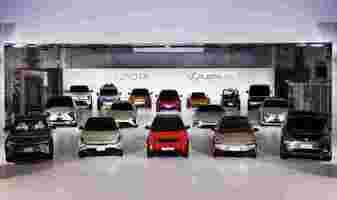

Still, the Japanese automaker isn’t giving up on its other green(ish) vehicles. It will invest $17.5 billion in the EV lineup, and an equal amount in the development of hybrid and hydrogen-powered cars as well.
Toyoda remarked:
This comment is in line with both Toyota’s previous reservations about an EV-only approach and with its market projections and opportunities — but now the CEO uses it as a justification for greener commitments.
Regarding Europe, for instance, the company has indeed pledged to sell only zero-emission vehicles by 2035, aligning with the European Union’s green deal measures .
But for the US, the automaker forecasts a higher demands for hybrids in the next decade. Toyota sees its hybrids making up slightly more than half of the vehicles it sells in the US, while EVs and hydrogen-powered cars are estimated to claim 15% of sales.
Simply put, Toyota is keeping all its options open. The automaker’s push into EVs comes as rivals have made aggressive commitments to electrify their lineups, but at the same time the company is playing it safe before going all the way.
And let’s not forget that, in November, Toyota declined to sign the Glasgow Declaration on Zero Emission Cars and Vans , proposing to phase out fossil-fuel cars by 2040 — which frankly, isn’t good enough.
Smart’s Concept #1 is sleek but too damn gold
Did you know SHIFT is taking the stage this fall ? Together with an amazing line-up of experts, we will explore the future of mobility during TNW Conference 2021. Secure your ticket now!
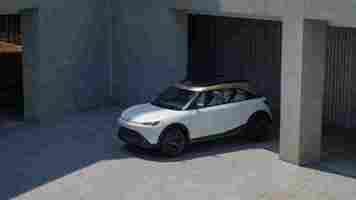
The Smart Concept #1 marks the beginning of the brand’s reinvention into an EV-only brand, since Mercedes and Geely announced their tie-up in 2020.
The Concept #1 premiered at the 2021 IAA Mobility Show in Munich and we got a glimpse of what Smart’s electric future will look like.
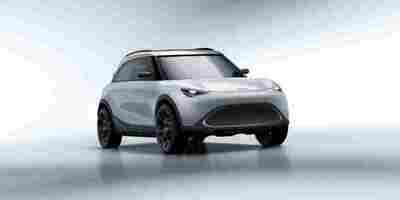

If you’re wondering about it, Smart does plan to turn the Concept #1 into a production vehicle with multiple versions including a long-range model. Production will start in China, where the electric crossover is expected to hit the market next year, while a European launch is lined up as well.
Do EVs excite your electrons? Do ebikes get your wheels spinning? Do self-driving cars get you all charged up?
Then you need the weekly SHIFT newsletter in your life. Click here to sign up.
BP says its EV chargers will be more profitable than pumps — here’s how it can happen
Oil giants like BP and Shell have been reluctant to welcome the transition to electric cars, for fear of losing money and market share. But now things seem to be changing and it looks like investing in EV infrastructure could bring more money than selling fuel.
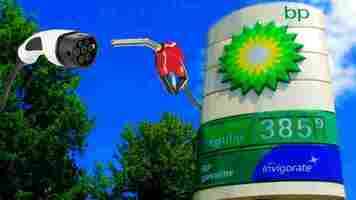
BP’s head of customers and products Emma Delaney told Reuters that while the company’s charging division isn’t expected to be profitable before 2025, on a margin level (money in, money out) it’s nearing the levels of gas filling.
As per Delaney,
To maximize this profitability, BP intends to expand its charging network from 11,000 stations to 70,000 stations by 2030, and 500,000 stations by 2050 — all of which will be fast chargers capable of reaching speeds of 50-150kW.
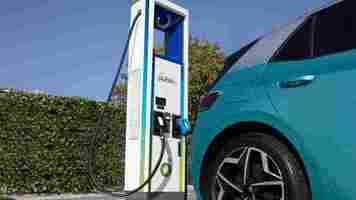

Delaney didn’t reveal any specific numbers on profit and loss for EV charging, but she did disclose that those margins are close in Europe and the UK, and that BP’s electricity sales increased 45% between the second and third quarters of 2021.
So, yes, a big revenue turnover by 2025 doesn’t seem unreasonable at all, and here are 4 ways BP could make it happen:
Let’s admit it: offering fast charging is a great selling point and BP has got it right. Why wait for hours to charge your car, when you could fill in enough juice within 20 to 30 minutes? People value their time and it’s only natural that there’s rising demand for wider access to fast chargers .
Convenience and reducing range anxiety play a key role when it comes to deciding charging on the go. In fact, according the Fuel Institute’s latest research , EV consumers prefer convenience over cost.
For example, EV charging users would be willing to pay double to access a charger close to officer buildings or highways. They also wouldn’t mind paying more for a convenient commercial charging station than to charge overnight at home with lower rates.
Even when fast charging, EV owners would still need to spend some 30 minutes at the stations. That’s enough time to generate indirect revenue from attached convenience stores. Be it a coffee, a snack, or some other type of consumer product, people are much more likely to buy something while waiting.
And beyond that, there’s an opportunity for an entirely new business model. BP could take it one step further and develop charging hubs, where consumers could shop at branches of big retailers and supermarkets. That wouldn’t just attract more customers, but also generate commission-based profit.
BP could collaborate with automakers for the integration of its charging stations into their navigation systems or mobile apps. Ease of access to real-time information, such as location and charger availability, enhance the drivers’ experience and smoothly directs them towards selected stations.
That way, BP could get greater charging volumes and access to customer data on charging and driving behavior. Similarly, OEMs could get commissions on the charging revenue — and that’s a win win.